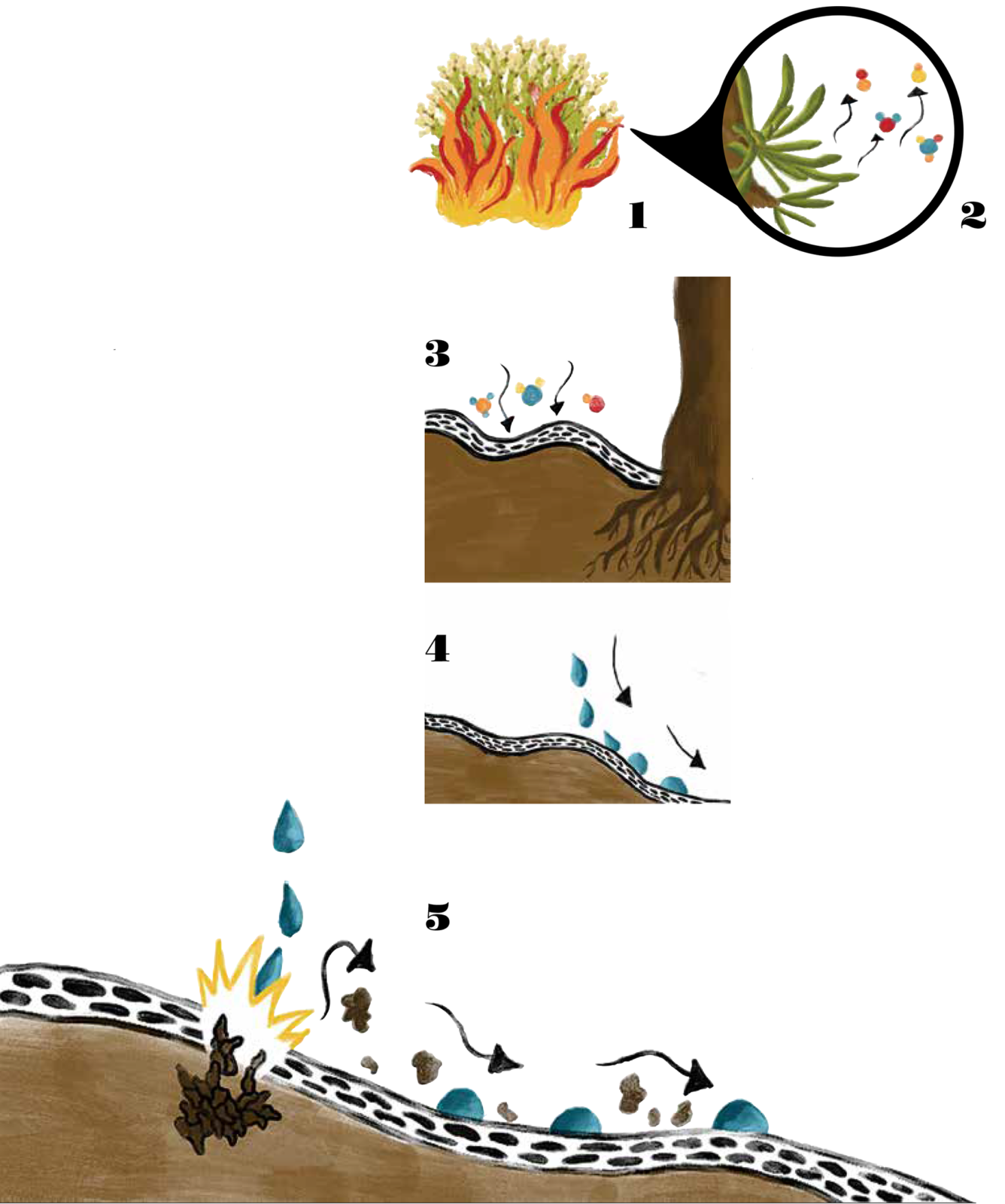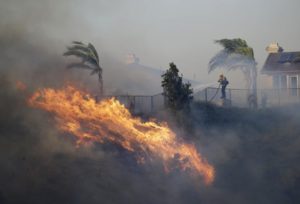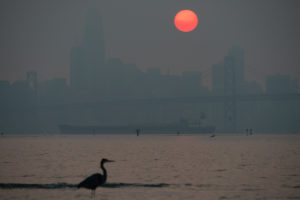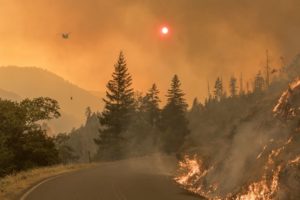
Graphic by Kaitlyn Kraybill-Voth; Source: Emmanuel Gabet, San Jose State
The damage from California’s record-setting fires didn’t stop when the flames were finally extinguished. Much of the North Bay saw flash flood warnings through the winter, while devastating mudslides in the Thomas Fire burn area killed 21 people in Santa Barbara County. Why do fires create such a mudflow hazard?
1. The waxy leaves of chaparral plants like chamise help retain moisture in dry Mediterranean-climate summers. But in a fire,
2. the waxy molecules vaporize in the heat and
3. condense at or just below the cooler soil surface.
4. The condensed wax layer repels water, creating a hydrophobic soil that is “like covering hillslopes with Saran wrap,” San Jose State geologist Emmanuel Gabet wrote in January in a comment on the California weather blog Weather West.
5. Clay soils usually hold together, preventing small particles of soil from being carried away. But after a fire, when there’s no protection from plants, raindrops falling on exposed soil blast apart the soil to create a debris field of smaller clumps. These smaller pieces are more susceptible to being carried away by water runoff — which the hydrophobic soil provides. “Everything conspires,” Gabet wrote, “to increase both the erodibility of the soil and the erosivity of the runoff.”




